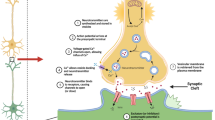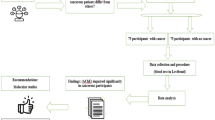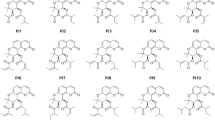Abstract
Normal butyrylcholinesterase (BuChE)1, but not several of its common genetic variants2, serves as a scavenger for certain anti–cholinesterases (anti–ChEs). Consideration of this phenomenon becomes urgent in view of the large–scale prophylactic use of the anti–ChE, pyridostigmine, during the 1991 Persian Gulf War, in anticipation of nerve gas attack3 and of the anti–ChE, tacrine, for improving residual cholinergic neurotransmission in Alzheimer's disease patients4. Adverse symptoms were reported for subjects in both groups, but have not been attributed to specific causes4,5. Here, we report on an Israeli soldier, homozygous for ‘atypical’ BuChE, who suffered severe symptoms following pyridostigmine prophylaxis during the Persian Gulf War. His serum BuChE and recombinant ‘atypical’ BuChE (ref. 6) were far less sensitive than normal BuChE to inhibition by pyridostigmine and several other carbamate anti–ChEs. Moreover, atypical BuChE demonstrated 1/200th the affinity for tacrine of normal BuChE or the related enzyme acetylcholinesterase (AChE). Genetic differences among BuChE variants may thus explain at least some of the adverse responses to anti–ChE therapies.
This is a preview of subscription content, access via your institution
Access options
Subscribe to this journal
Receive 12 print issues and online access
$209.00 per year
only $17.42 per issue
Buy this article
- Purchase on Springer Link
- Instant access to full article PDF
Prices may be subject to local taxes which are calculated during checkout
Similar content being viewed by others
References
Schwarz, M., Click, D., Loewenstein, Y. & Soreq, H. Engineering of human cholinesterases explains and predicts diverse consequences of administration of various drugs and poisons. Pharmacol Ther. (in the press).
La Du, B.N. et al. Phenotypic and molecular biological analysis of human butyrylcholinesterase variants. Clin. Biochem. 23, 423–431 (1990).
Keeler, J.R., Hurst, C.G. & Dunn, M.A. Pyridostigmine used as a nerve agent pretreatment under wartime conditions. JAMA 266, 693–695 (1991).
Winker, M.A. Tacrine for Alzheimer's disease; which patient, what dose? JAMA 271, 1023–1024 (1994).
Sharabi, Y. et al. Survey of symptoms following intake of pyridostigmine during the Persian Gulf War. Isr. J. med. Scl 27, 656–658 (1991).
Neville, L.F. et al Intramolecular relationships in cholinesterases revealed by oocyte expression of site-directed and natural variants of human BCHE. EMBO J. 11, 1641–1649 (1992).
McGuire, M.C. et al. Identification of the structural mutation responsible for the dibucaine-resistant (atypical) variant form of human serum cholinesterase. Proc. natn. Acad. Sci. U.S.A. 86, 953–957 (1989).
Kalow, W. & Davis, R.O. The activity of various esterase inhibitors towards atypical human serum cholinesterase. Biochem. Pharmacol. 1, 183–192 (1958).
Lockridge, O. Genetic variants of serum cholinesterase influence metabolism of the muscle relaxant succinylcholine. Pharmacol. Ther. 47, 35–60 (1990).
Ehrlich, G. et al. Population diversity and distinct haplotype frequencies associated with ACHE and BCHE genes of Israeli Jews from Transcaucasian Georgia and from Europe. Genomics 22, 288–295 (1994).
Soreq, H. & Zakut, H. Human Cholinesterases and Anticholinesterases (Academic Press, San Diego, California, 1993).
Schwarz, M. et al. Successive organophosphate inhibition and oxime reactivation reveals distinct responses of recombinant human cholinesterase variants. Molec. Brain Res. 31, 101–110 (1995).
Seidman, S. et al. Synaptic and epidermal accumulations of human acetylcholinesterase are encoded by alternative 3′-terminal exons. Molec. cell. Biol. 15, 2993–3002 (1995).
Chatonnet, A. & Lockridge, O. Comparison of butyrylcholinesterase and acetylcholinesterase. Biochem. J. 260, 625–634 (1989).
Giacobini, E. The second generation of cholinesterase inhibitors: Pharmacological aspects. in Cholinergic Basis for Alzheimer Therapy (eds Becker, R. & Giacobini, E.) 247–262 (Birkhauser, Boston, 1991).
Iversen, L.L. Approaches to cholinergic therapy in Alzheimer's disease. Prog. Brain. Res. 98, 423–426 (1993).
Enz, A., Amstutz, R., Boddeke, H., Gmelin, G. & Malonowski, J. Brain selective inhibition of acetylcholinesterase: A novel approach to therapy for Alzheimer's disease. Prog. Brain Res. 98, 431–437 (1993).
Harel, M. et al. Quaternary ligand binding to aromatic residues in the active-site gorge of acetylcholinesterase. Proc. natn. Acad. Sci. U.S.A. 90, 9031–9035 (1993).
Harel, M. et al. Conversion of acetylcholinesterase to butyrylcholinesterase: Modeling and mutagenesis. Proc. natn. Acad. Sci. U.S.A. 89, 10827–10831 (1992).
Valentine, R.J., Lockridge, O., Eckerson, H.W. & La Du, B.N. Prediction of drug sensitivity in individuals with atypical serum cholinesterase based on in vitro biochemical studies. Biochem. Pharmacol. 30, 1643–1649 (1981).
Gavageran, H. NIH panel rejects Persian Gulf syndrome. Nature 369, 8 (1994).
Ott, P., Lustig, A., Brodbeck, U. & Rosenbusch, J.P. Acetylcholinesterase from human erythrocyte membranes: Dimers as functional units. FEBS Lett. 138, 187–189 (1982).
Johansson, I.M. & Nordberg, A. Pharmacokinetic studies of cholinesterase inhibitors. Acta neurol. scand. Suppl. 149, 22–25 (1993).
Berman, H.A. & Leonard, K. Interaction of tetrahydroaminoacridine with acetylcholinesterase and butyrylcholinesterase. Molec. Pharmacol. 41, 412–418 (1992).
May, D.G. Genetic differences in drug disposition. J. clin. Pharmacol. 34, 881–897 (1994).
Author information
Authors and Affiliations
Rights and permissions
About this article
Cite this article
Loewenstein-Lichtenstein, Y., Schwarz, M., Glick, D. et al. Genetic predisposition to adverse consequences of anti–cholinesterases in ‘atypical’ BCHE carriers. Nat Med 1, 1082–1085 (1995). https://doi.org/10.1038/nm1095-1082
Received:
Accepted:
Issue Date:
DOI: https://doi.org/10.1038/nm1095-1082
This article is cited by
-
Cholinesterase activity in serum during general anesthesia in patients with or without vascular disease
Scientific Reports (2021)
-
Butyrylcholinesterase—a potential plasma biomarker in manganese-induced neurobehavioral changes
Environmental Science and Pollution Research (2019)
-
Biochemical Analysis and Association of Butyrylcholinesterase SNPs rs3495 and rs1803274 with Substance Abuse Disorder
Journal of Molecular Neuroscience (2019)
-
Butyrylcholinesterase genotype and enzyme activity in relation to Gulf War illness: preliminary evidence of gene-exposure interaction from a case–control study of 1991 Gulf War veterans
Environmental Health (2015)
-
Cholinesterases as Biomarkers for Parasympathetic Dysfunction and Inflammation-Related Disease
Journal of Molecular Neuroscience (2014)



